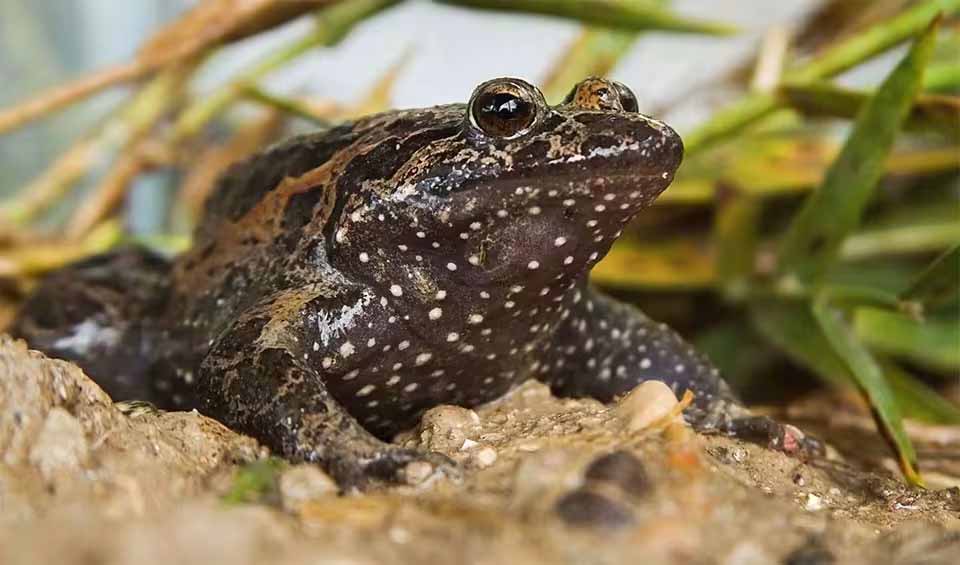Alytidae – Painted frogs
Male frogs of this family carry a string of fertilized eggs on their backs, making them commonly known as "midwife frogs"
Midwife toads, fascinating creatures, have a knack for adapting to a variety of environments, from semi-arid regions to temperate woodlands. What’s interesting about them is their choice of habitat – they tend to favor places with slopes, walls, or embankments that aren’t densely covered with vegetation. To keep from drying out, you can often find them seeking shelter in the nooks and crannies of these structures or even taking advantage of burrows dug by other animals.
These toads are known for their unique call – it’s a sharp, high-pitched staccato whistle that some say sounds like an “electronic beeping.” This distinctive sound is how they identify and communicate with each other, helping them find potential mates and establish their territories.
Another captivating aspect of midwife toads is their ability to thrive in both urban and rural environments. They are known to coexist with human populations, often being found in gardens, parks, and even urban ponds.
In their natural environment, midwife toads can live quite a while, with some individuals reaching up to eight years. They mostly dine on insects and small invertebrates that they come across in the undergrowth. Their role as insect hunters helps keep local insect populations in check, making them valuable contributors to the balance of the local ecosystem.
Genera in this family
Was recently (2011) rediscovered after being declared extinct for 60 years


